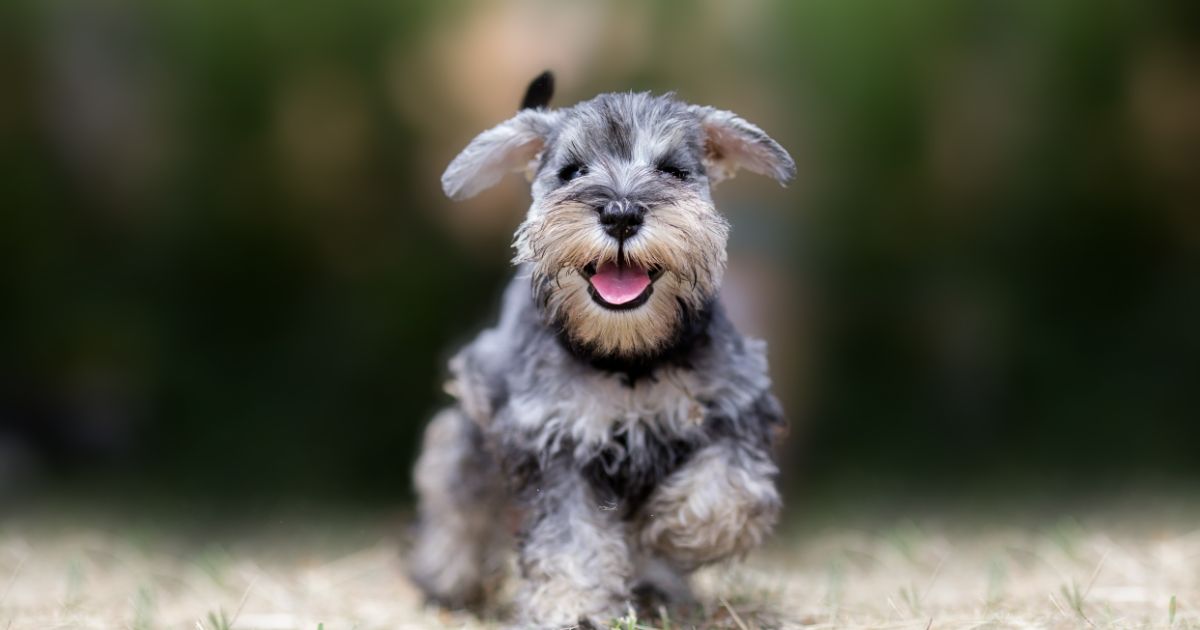Schnauzers, characterized by their distinctive bearded snouts and wiry coats, are a robust and spirited breed that comes in three different sizes: Miniature, Standard, and Giant. Originally bred in Germany to be versatile farm dogs, they served various roles from ratting to guarding livestock. Today, Schnauzers are cherished for their lively personalities, intelligence, and loyal nature, making them excellent family pets and companions. Despite their popularity and charming demeanor, Schnauzers exhibit a range of behaviors that can be both intriguing and somewhat unusual. These habits often stem from their working heritage, their innate intelligence, and their strong-willed character. This article explores seven of the most unusual habits of Schnauzers, delving into the origins of these behaviors and offering advice on how to manage them effectively.

1. Intense Verbal Communication
Schnauzers are known for their vocal behavior; they do not just bark, they seem to try to communicate. This trait likely stems from their history as guard dogs, where they were expected to alert farmers to any disturbances. Their barking can range from alerting to potential dangers to expressing excitement or even boredom. Training to manage their barking from an early age is essential, using commands to quiet down and providing plenty of mental stimulation to prevent barking out of boredom. Understanding the cues that trigger their vocalization can also help in addressing this behavior effectively.
2. Chasing Small Animals
Despite their domestication, Schnauzers have retained a high prey drive from their days as ratters and hunters of small game. This instinct can sometimes manifest in a strong desire to chase small animals such as squirrels, rabbits, or even smaller pets. Training a reliable recall command and ensuring they are in a secure area when off-leash are crucial. Engaging them in games that mimic chasing, like fetch or agility sports, can also provide a safe outlet for this behavior.
3. Suspiciousness Towards Strangers
Schnauzers can be inherently suspicious of strangers, a trait that makes them excellent watchdogs. This wariness is part of their protective nature but can lead to aggressive behaviors if not properly managed. Socialization from a young age is critical, exposing them to a variety of people and situations to reduce their innate suspicion. Consistent training that reinforces positive interactions and discourages aggressive guarding behavior is also beneficial.
4. Obsessive Beard Cleaning
Schnauzers often have a habit of wiping their beards on couches, carpets, or even on their owners after eating or drinking. Their long facial hair collects food and water, which can be uncomfortable for them. Providing a mat or special towel for them to wipe their beards on can help manage this behavior and keep your home cleaner. Regular grooming and trimming of the beard can also minimize this need.
5. Digging Holes
Many Schnauzers develop a habit of digging, which can be traced back to their use as hunting dogs, where digging was often necessary to catch vermin. This behavior can be troublesome, particularly in gardens or lawns. Providing a designated digging area in the yard can allow them to indulge in this instinct without causing destruction elsewhere. Increasing their physical and mental exercise can also help reduce their desire to dig.
6. Guarding Their Food
Schnauzers may display food guarding behavior, which can be problematic, especially in households with other pets or children. This behavior can be mitigated by teaching them from a young age that human presence near their food is not a threat. Feeding them in a calm environment and using training sessions to approach their food while rewarding them for calm behavior can help lessen this instinct.
7. Spinning Before Lying Down
Schnauzers often spin in circles before lying down. This behavior might be a remnant of their ancestors’ need to trample down grass to make a sleeping spot. While it’s usually a harmless quirk, if the spinning seems excessive, it could indicate a need for more exercise or could be a sign of discomfort. Ensuring they have a comfortable resting area and sufficient daily activity can help minimize restlessness.
Schnauzers are a fascinating breed with a combination of endearing qualities and unusual habits that reflect their historical roles and innate characteristics. By understanding these behaviors, owners can provide a more fulfilling environment that caters to their needs. Effective management through training, exercise, and mental stimulation can ensure that Schnauzers not only behave well but also thrive as beloved companions.
 Toledo, United States.
Toledo, United States.